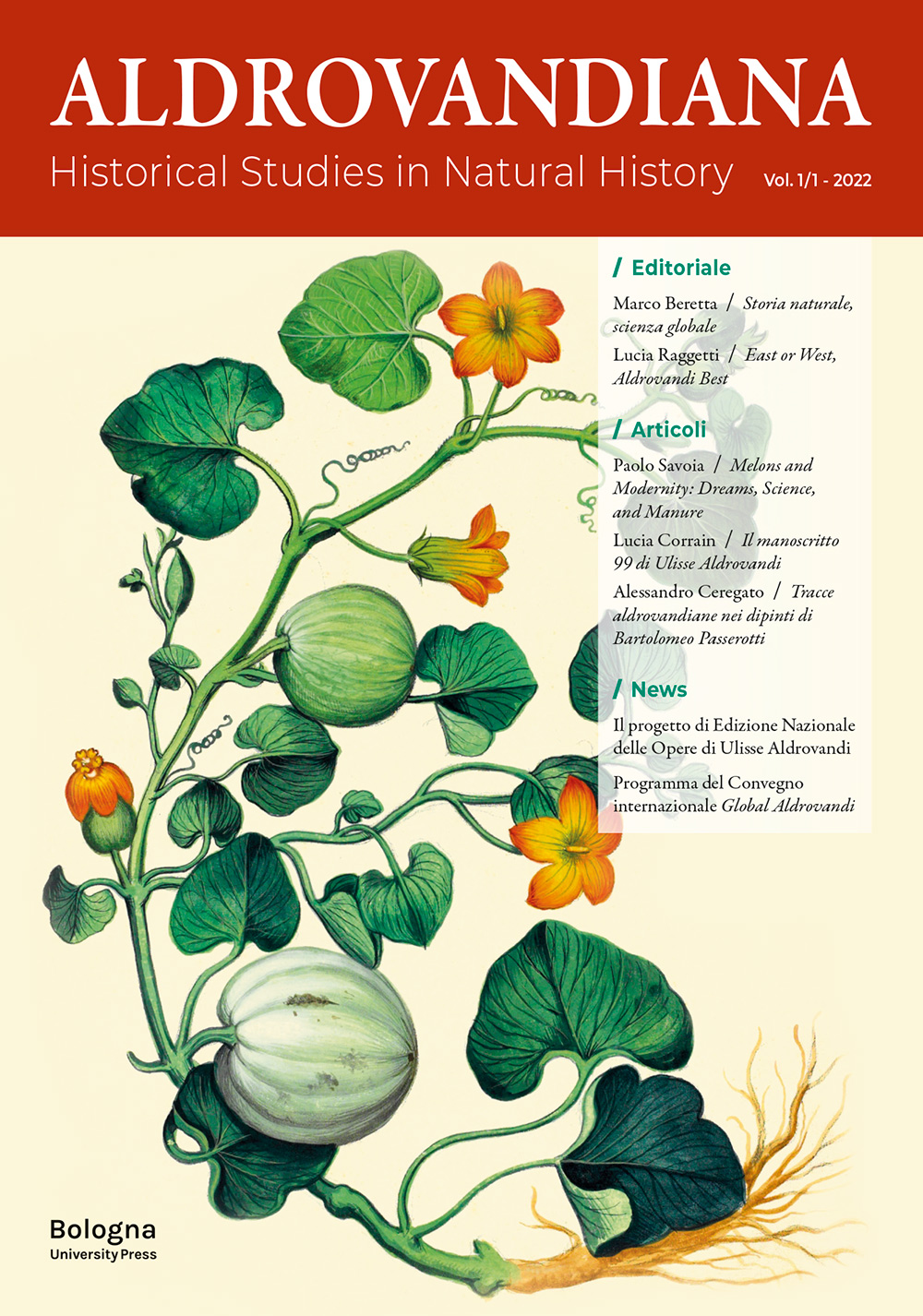Published 2022-07-04
Keywords
- Agronomy, Dreams, Scientific revolution, Melons, Food
How to Cite
Copyright (c) 2022 Aldrovandiana

This work is licensed under a Creative Commons Attribution 4.0 International License.
Abstract
Melons were among the most desired and the most dangerous fruits in early modern Europe. Dreamed about by René Descartes in one of the most famous dreams in the history of European culture, they came from messy procedures happening below the surface of the cultivated soil. Present in all major dietetic books, melons were treated with suspicion due to their moistness, which was believed to bring about putrefaction in the stomach, but they were also the object of a careful aesthetics of the table, and a valuable commercial item. Melons were the object of special cultivation techniques, consisting in complex “artificial” procedures involving the use of manure and mud. By focusing on 16th and 17th century books of agronomy, dream interpretation, public health decrees and consultations, natural magic, and Ulisse Aldrovandi’s information-gathering practices, this article argues that melons were at the center of both cosmological symbology and practical experimentation, a combination that was central to the developments of the “scientific revolution.”
